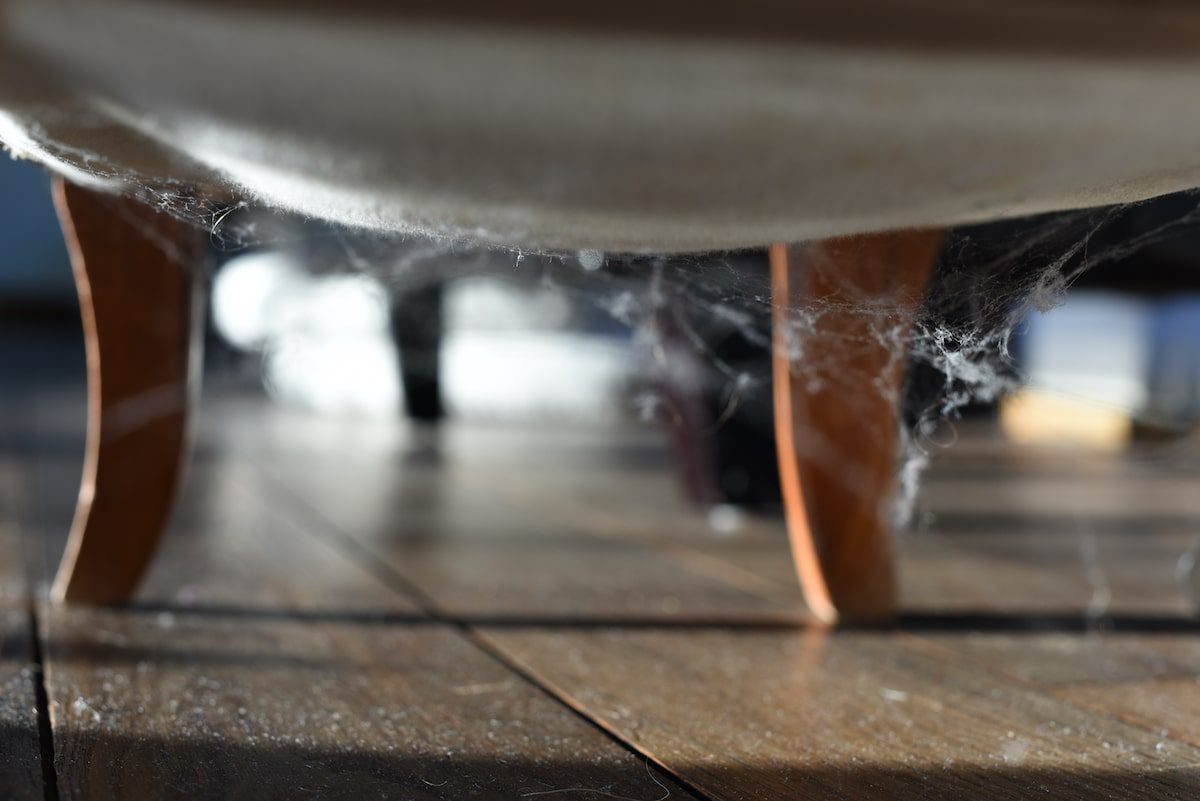What Are Cobwebs And How Do You Prevent Them?

The word "cobweb" evokes visuals of spooky old houses, uncleaned attics and dusty corners. These are not things you want in your clean and modern home. Despite their reputation, cobwebs aren't a true reflection of your home's cleanliness or spiritual inhabitants. Instead, these corner-clinging webs are created by spiders. And the more you know, the easier it is to prevent and get rid of these webs.
What causes cobwebs in the house?
Cobwebs are a form of a spiderweb. The Theridiidae family of spiders consists of over 200 species commonly found in houses and apartments, meaning your cobwebs are likely not home to a harmful pest like a black widow. Most house spiders aren't interested in humans —they care more about catching bugs like the common housefly in their webs for food.
The common cobweb is created when a web is abandoned by a spider. The threads will break and become covered by dust on the sticky strands, creating the actual cobweb. The more dust you have in your house as a result of cooking, outdoor gardens or pets, the faster your cobweb will look old and dusty.
How are cobwebs different from spiderwebs?
Professor emeritus of biological sciences at Ohio University and arachnid expert Jerome S. Rovner explains, “Unlike beautiful orb webs, funnel webs, and other more regular web constructions, cobwebs are irregular mesh-works.” Some might consider them the asymmetrical artists of the spider world, as these webs lack the balanced shapes we commonly associate with webbed insect traps.
Cobwebs are sticky, primarily for catching prey whereas other types of webs can be fuzzy or primarily structural. The house spiders that create cobwebs lack the elegance of the geometric builders we typically see in photos. Their webs lack the back doors and emergency exits of other builders, making them seem like they aren't the smartest builders in the room.
How do I prevent cobwebs from forming?
The easiest way to prevent cobwebs would be to eliminate all spiders in your home, and that's not realistic. Smithsonian Magazine shares that there may be up to 200 species of arthropod, or a group of animals that includes insects, spiders and crustaceans, in the average home. But don't worry, they aren't there to hurt you.
Chances are, no matter what you do, there will be some spiders in your home. Some of those spiders may create cobwebs, so cleaning regularly is your best defense. Dusting once a week if you can is key, but twice a month is also acceptable. Remember to dust the corners of your home that don't always get a lot of traffic, like hallway corners, window ledges and window wells.
Make sure to hit the upper corners of all the areas you dust as cobwebs tend to form here, but not before putting a towel down on any items or furniture below. You don’t want to create any additional work for yourself. Be sure to vacuum the floor after to prevent both dirt and dust from recirculating.
We also recommend spraying an insecticide around any openings or gaps within your home once a month to keep the spiders away. You can also seal cracks and crevices as part of your regular home maintenance.
How do I get rid of cobwebs?
Once cobwebs have been established, getting rid of them can be a stickier situation. A favorite web removal tool is the vacuum. Use your narrow attachment to suck the web threads from corners and crevices that are difficult to reach. For interiors, a spray bottle works well to reach difficult and tiny spaces, including window screens. If tackling outdoor cobwebs, try using the garden hose to spray down distant areas. Potted plants and other leafy greens can be very appealing to your home arachnids, so check behind these items and make sure to move these if cobwebs or spiderwebs keep appearing in the same place.
Cobwebs are, in essence, dusty, sticky spider webs. The environment in your home can make these more or less common, but they can occur anywhere and affect anyone. Preventative cleaning is your best defense, and water and a vacuum can help fix any webs that do occur.

